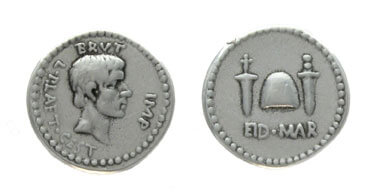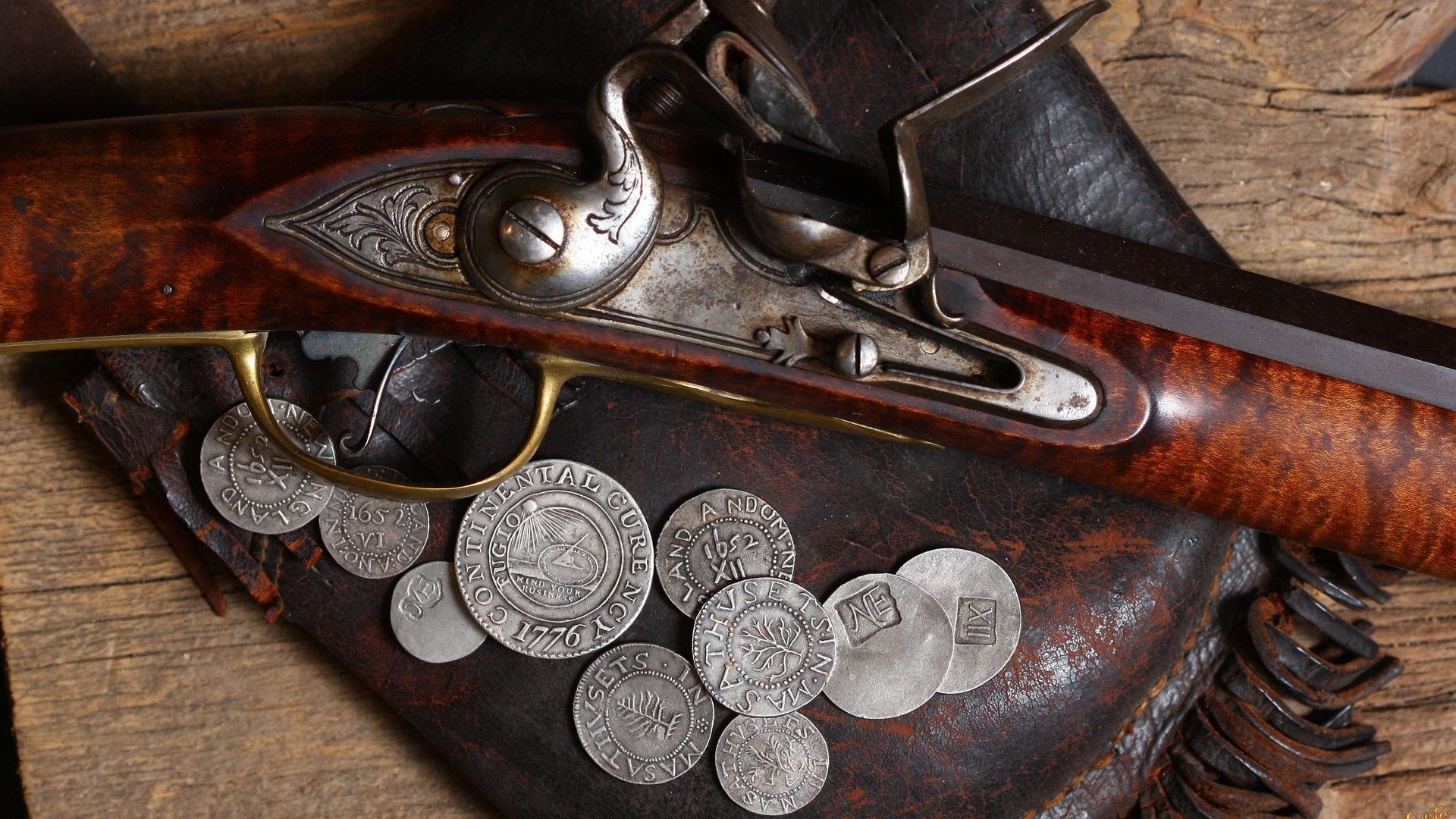Calling themselves “Liberators” trying to save the Roman Republic way of government, Brutus and Cassius took a leading role in the assassination of Julius Caesar on March 15, 44 B.C
Caesar was very popular, and soon after the assassination, there was a uprising which force Brutus and Cassius to flee Rome.
In 43 B.C. Caesar’s nephew Octavian received his consulship from the Roman Senate, he then declared the conspirators murderers. This led to the “ Liberators’ Civil War” .
Octavian and Mark Antony combined their troops and decisively defeated the armies of Brutus and Cassius at the Battle of Philippi.
The following five coins were struck by their respective traveling military mints in 43-42 B.C.:
Brutus commemorates his assassination of Julius Caesar on the notorious Ides of March, 43-42 BC, with his portrait and the famous reverse of two daggers on this coin he had struck.
The reverse type refers to Brutus’ victories in Thrace and is believed that these coins were struck from silver obtained from Polemocratia, the widow of the Thracian prince Sadala.
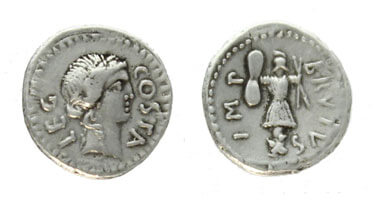
Obverse: COSTA LEG, laureate head of Apollo right
Reverse: IMP BRVTVS, Trophy composed of helmet, cuirass, figure-eight shield and two spears,IMP to left, BRVTVS to right.
Cassius, Lentulus Spinther, Moneyer, Military mint, probably at Smyrna, early 42 B.C.
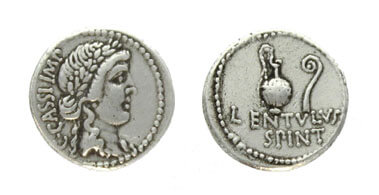
Obverse; C. CASSI. IMP left, LEIBERTAS right, diademed and draped bust of Libertas right
Reverse : LENTVLVS SPINT in two lines below jug and lituus.
Cassius, Military mint, probably at Sardis,
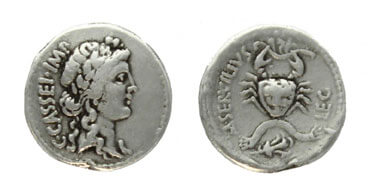
Obverse: Laureate head of Libertas right, C. CASSEI. IMP behind
Reverse: M. SERVILIVS LEG, crab holding aplustre in claws, rose beneath untied diadem.
Struck by M. Servilius Legate, at a military mint at Sardis. The final issue of Cassius. This reverse type commemorates the capture of Rhodes by Cassius.
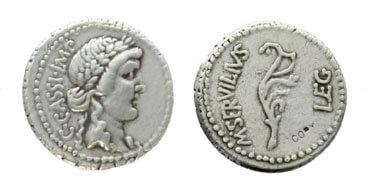
Obverse: – C . CASSO . IMP., Diad. head of Liberty
Reverse: – MSERVILIVS . LEG, aplustre with branches terminating in flowers

